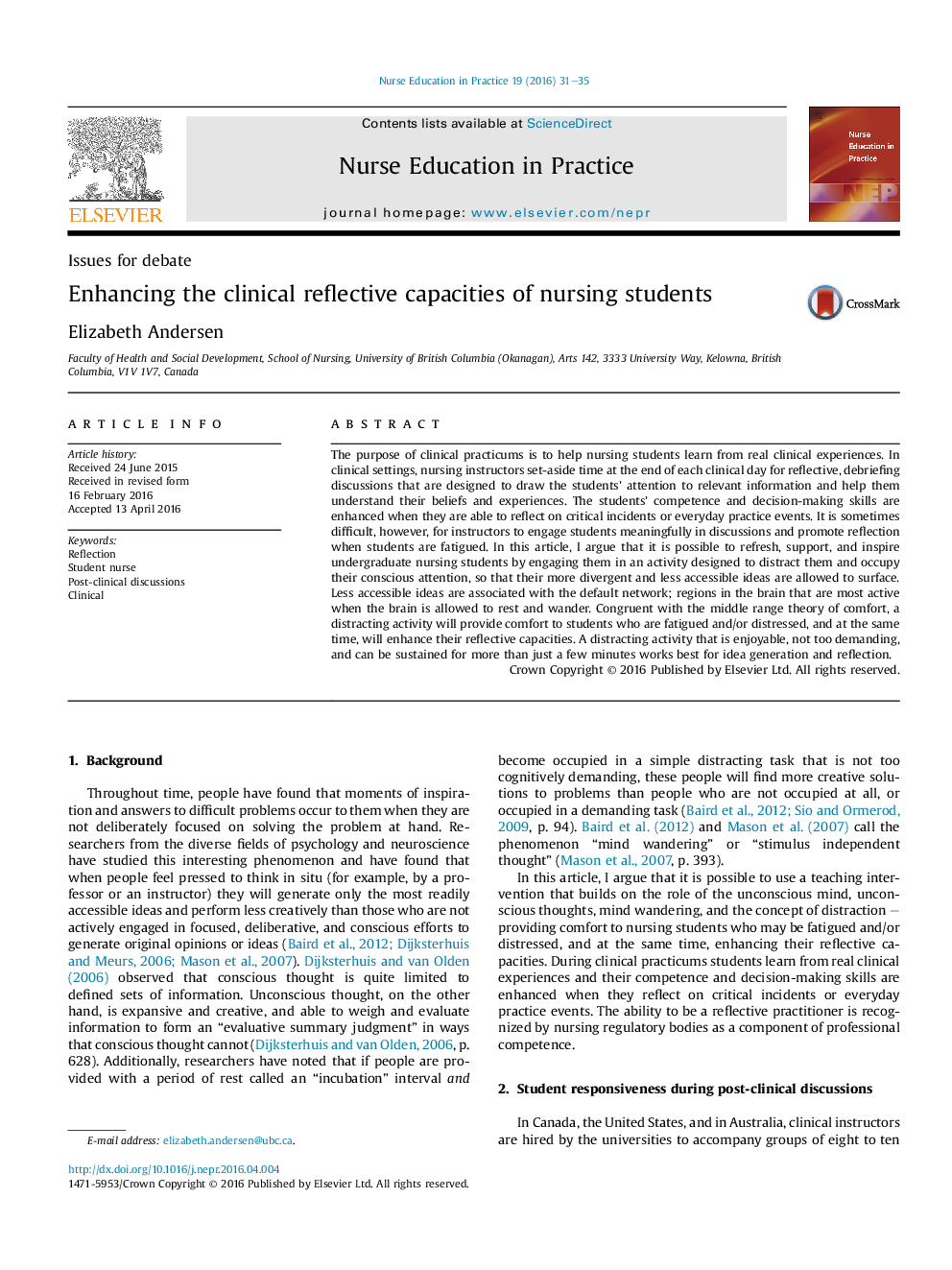| Article ID | Journal | Published Year | Pages | File Type |
|---|---|---|---|---|
| 366651 | Nurse Education in Practice | 2016 | 5 Pages |
•Builds on the role of the unconscious mind, unconscious thoughts, and concept of distraction.•Provides comfort to students and enhances their reflective capacities.•A creative way to renew nursing students' energies for post-clinical discussions.
The purpose of clinical practicums is to help nursing students learn from real clinical experiences. In clinical settings, nursing instructors set-aside time at the end of each clinical day for reflective, debriefing discussions that are designed to draw the students' attention to relevant information and help them understand their beliefs and experiences. The students' competence and decision-making skills are enhanced when they are able to reflect on critical incidents or everyday practice events. It is sometimes difficult, however, for instructors to engage students meaningfully in discussions and promote reflection when students are fatigued. In this article, I argue that it is possible to refresh, support, and inspire undergraduate nursing students by engaging them in an activity designed to distract them and occupy their conscious attention, so that their more divergent and less accessible ideas are allowed to surface. Less accessible ideas are associated with the default network; regions in the brain that are most active when the brain is allowed to rest and wander. Congruent with the middle range theory of comfort, a distracting activity will provide comfort to students who are fatigued and/or distressed, and at the same time, will enhance their reflective capacities. A distracting activity that is enjoyable, not too demanding, and can be sustained for more than just a few minutes works best for idea generation and reflection.
